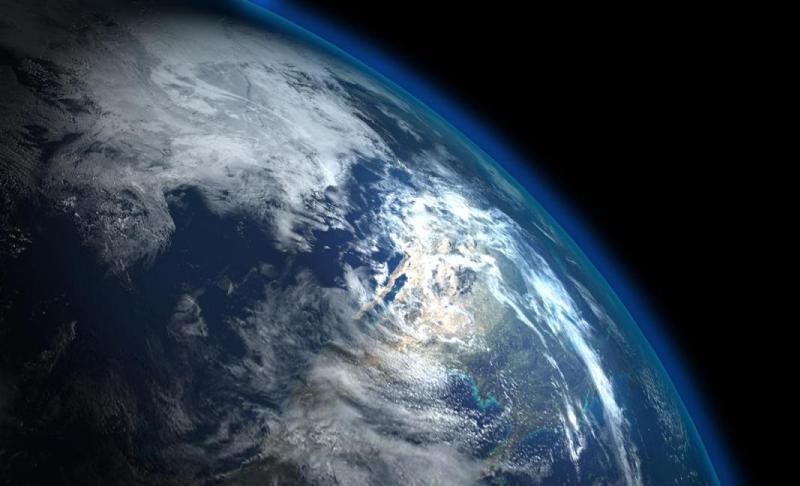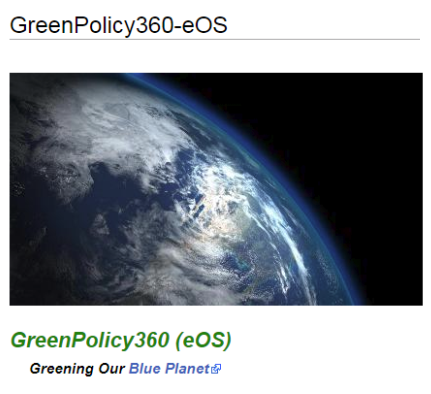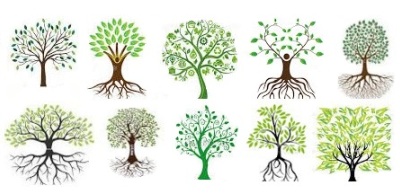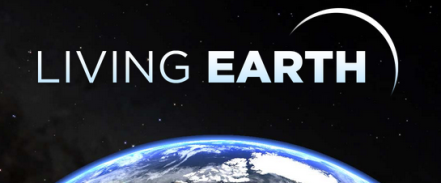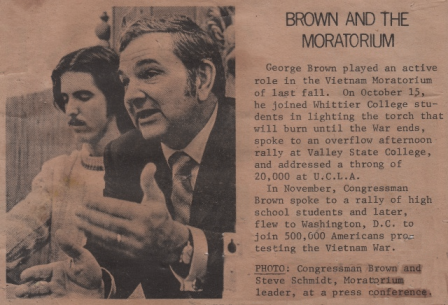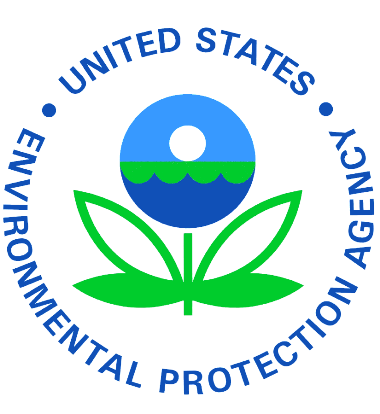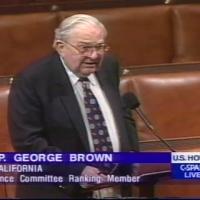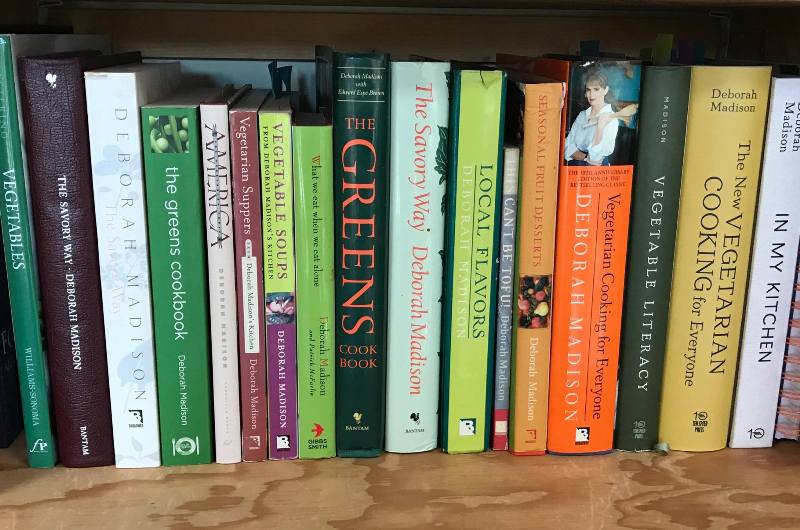Green Best Practices: Difference between revisions
Siterunner (talk | contribs) No edit summary |
Siterunner (talk | contribs) No edit summary |
||
| (30 intermediate revisions by the same user not shown) | |||
| Line 4: | Line 4: | ||
: "Green Best Practices": Sharing Success Stories Community-to-Community | : "Green Best Practices": Sharing Success Stories Community-to-Community | ||
[[File:GrnPolicy bestpractice aok .png|link=http://www.greenpolicy360.net/w/Going_Green]] | [[File:GrnPolicy bestpractice aok .png|link=http://www.greenpolicy360.net/w/Going_Green]] | ||
<big><big>'''GreenPolicy360 Best Practices'''</big></big> | <big><big>'''GreenPolicy360 Best Practices'''</big></big> | ||
: '''It's good business to build on | : '''It's good business to build on successful [[Best Practices]]''' | ||
| Line 17: | Line 18: | ||
Our GRN360 'Best Practices Project' provides green initiatives, resolutions/laws/ordinances, data and project information gathered and organized via keywords/categories/topics and locations. Green best practices are easily searched, shared and networked. Green Networking is [https://www.greenpolicy360.net/w/Category:Green_Networking '''your open sharing network'''] | Our GRN360 'Best Practices Project' provides green initiatives, resolutions/laws/ordinances, data and project information gathered and organized via keywords/categories/topics and locations. Green best practices are easily searched, shared and networked. Green Networking is [https://www.greenpolicy360.net/w/Category:Green_Networking '''your open sharing network'''] | ||
| | ||
[[File:GreenLinks logo.png|link=https://www.greenpolicy360.net/w/GreenLinks]] | [[File:GreenLinks logo.png|link=https://www.greenpolicy360.net/w/GreenLinks]] | ||
| Line 24: | Line 25: | ||
GreenPolicy360 (.com/.net/.org, [http://www.greenpolicy360.net/w/GreenLinks GreenLinks] and associated social media sites) ... an eco operating system and online network of [http://www.greenpolicy360.net/w/Category:Best_practice_system '''green best practices'''].... | GreenPolicy360 (.com/.net/.org, [http://www.greenpolicy360.net/w/GreenLinks '''GreenLinks'''] and associated social media sites) ... an eco operating system and online network of [http://www.greenpolicy360.net/w/Category:Best_practice_system '''green best practices'''].... | ||
🌎 | 🌎 | ||
<big><big>'''Models of green success stories at GreenPolicy360'''</big></big> | <big><big>'''Models of green success stories at GreenPolicy360'''</big></big> | ||
| Line 49: | Line 51: | ||
<big>'''''Share GreenPolicy360's Content, 'Go Green' '''''</big> | |||
<big><big>'''''Connecting & sharing world changing stories'''''</big></big> | |||
[[File:CreativeCommons CC.png]] | |||
<big>'''Navigate Best Practices at GreenPolicy'''</big> | <big>'''Navigate Best Practices at GreenPolicy'''</big> | ||
| Line 60: | Line 68: | ||
[https://www.greenpolicy360.net/w/Category:Topic '''Category: Topic | Topics'''] | [https://www.greenpolicy360.net/w/Category:Topic '''Category: Topic | Topics'''] | ||
[https://www.greenpolicy360.net/w/Category:Green_Graphics '''Category:Green_Graphics | Media/Images'''] | [https://www.greenpolicy360.net/w/Category:Green_Graphics '''Category:Green_Graphics | Media/Images'''] | ||
[[File:'Thin Blue Layer' of Earth's Atmosphere 2.jpg]] | |||
| Line 70: | Line 83: | ||
<font color=green><big><big><big>'''''Going Green'''''</big></big></big></font> [[File:Best Practices check sm.png]] | <font color=green><big><big><big>'''''Going Green'''''</big></big></big></font> [[File:Best Practices check sm.png]] | ||
<big>'''Visit GreenPolicy's Local & Global Updates'''</big> | <big>'''Visit GreenPolicy's Local & Global Updates'''</big> | ||
* [https://www.greenpolicy360.net/w/Special:MostLinkedCategories '''Our Most Linked-to Categories'''] | * [https://www.greenpolicy360.net/w/Special:MostLinkedCategories '''Our Most Linked-to Categories'''] | ||
| Line 82: | Line 95: | ||
[http://www.greenpolicy360.net/w/File:Connect_cooperative_networking_2.jpg <font color=green><big><big><big>'''''Green Networking'''''</big></big></big></font>]: | [http://www.greenpolicy360.net/w/File:Connect_cooperative_networking_2.jpg <font color=green><big><big><big>'''''Green Networking'''''</big></big></big></font>]: | ||
<big>'''Review our Best Practices Database:'''</big> | <big>'''Review our Best Practices Database:'''</big> | ||
* [http://www.greenpolicy360.net/mw/index.php?title=Special:Categories&offset=&limit=254 '''Find Categories here''']. Note the quick link pages and [http://www.greenpolicy360.net/w/Category:Green_Graphics '''media entries''', including option to [[Browse]] by [[Topic]]. | * [http://www.greenpolicy360.net/mw/index.php?title=Special:Categories&offset=&limit=254 '''Find Categories here''']. Note the quick link pages and [http://www.greenpolicy360.net/w/Category:Green_Graphics '''media entries'''], including option to [[Browse]] by [[Topic]]. | ||
* Category data include pages featuring [https://www.greenpolicy360.net/w/Category:Green_Best_Practices '''green best practices'''] of nations, states, counties, cities, communities, activist groups and organizations ... and proposals, resolutions, ordinances, policies, initiatives, rules and regulations. | * Category data include pages featuring [https://www.greenpolicy360.net/w/Category:Green_Best_Practices '''green best practices'''] of nations, states, counties, cities, communities, activist groups and organizations ... and proposals, resolutions, ordinances, policies, initiatives, rules and regulations. | ||
| Line 95: | Line 109: | ||
<big>'''Search our international GreenLinks Network [http://www.greenpolicy360.net/w/Additional_Website_Resources_-_Linked_Data_-_Green_Best_Practices <font color=green><u>'''GreenLinks here'''</u></font>] or visit [https://www.greenpolicy360.net/w/GreenLinks <font color=green><u>'''GreenLinks here.'''</u></font>]'''</big> | <big>'''Search our international GreenLinks Network [http://www.greenpolicy360.net/w/Additional_Website_Resources_-_Linked_Data_-_Green_Best_Practices <font color=green><u>'''GreenLinks here'''</u></font>] or visit [https://www.greenpolicy360.net/w/GreenLinks <font color=green><u>'''GreenLinks here.'''</u></font>]'''</big> | ||
<big>'''Featured @GreenPolicy'''</big> | |||
* "[[Earthrise]]" | |||
* "[[Earth Day]]" 🌎 | |||
* [https://www.greenpolicy360.net/w/Earth_Science_Research_from_Space '''Earth Observations, Earth Science'''] | |||
* [[Planet Earth Perspective]] | |||
* [http://www.thinbluelayer.com '''ThinBlueLayer.com'''] | |||
* [[PlanetCitizen]] | |||
* [[Planet Citizens]] | |||
* [[Planet Citizens, Planet Scientists]] | |||
* [[Going Green | Going Green]] | |||
* [[Planet Citizen Action]] | |||
* [https://www.greenpolicy360.net/w/File:GreenPolicy360_-_Resilience.png '''Resilience'''] | |||
| Line 141: | Line 170: | ||
[https://www.greenpolicy360.net/w/User:Siterunner '''GreenPolicy360 Siterunner'''] | |||
[https://www.greenpolicy360.net/w/User:Siterunner GreenPolicy360 Siterunner] | |||
<big>Looking back to the beginnings of "Green Best Practices":</big> | <big>Looking back to the beginnings of "Green Best Practices":</big> | ||
| Line 157: | Line 179: | ||
Our eco- and political-roots go back to lessons learned over three decades influenced by a trained engineer who was educated in physics and brought a core set of forward-looking values to his work. [https://www.greenpolicy360.net/w/George_E._Brown_Jr '''Representative George E. Brown'''], originally from East Los Angeles/Monterey Park, was "instrumental" in envisioning and working to pass historic environmental initiatives over three decades in the U.S. Congress, including the recommendations and legislation that led to the US EPA's establishment. [https://en.wikipedia.org/wiki/George_Brown,_Jr. '''Congressman Brown'''] was right there in the center of first era of U.S. environmental legislation, a stalwart supporter of science who went on to become chair of the House Science Committee. In many roles, including drafting the legislation that set up the first 'National Climate Research Program' via the [http://www.greenpolicy360.net/mw/images/National_Climate_Program_Act_Public_Law_95-367_Sept_1978.pdf '''National Climate Program Act of 1978''']. George worked every day with singular focus on science and the environment until his untimely death in 1999.'' | Our eco- and political-roots go back to lessons learned over three decades influenced by a trained engineer who was educated in physics and brought a core set of forward-looking values to his work. [https://www.greenpolicy360.net/w/George_E._Brown_Jr '''Representative George E. Brown'''], originally from East Los Angeles/Monterey Park, was "instrumental" in envisioning and working to pass historic environmental initiatives over three decades in the U.S. Congress, including the recommendations and legislation that led to the US EPA's establishment. [https://en.wikipedia.org/wiki/George_Brown,_Jr. '''Congressman Brown'''] was right there in the center of first era of U.S. environmental legislation, a stalwart supporter of science who went on to become chair of the House Science Committee. In many roles, including drafting the legislation that set up the first 'National Climate Research Program' via the [http://www.greenpolicy360.net/mw/images/National_Climate_Program_Act_Public_Law_95-367_Sept_1978.pdf '''National Climate Program Act of 1978''']. George worked every day with singular focus on science and the environment until his untimely death in 1999.'' | ||
'''George E. Brown & EPA, an Environmental Protection Legacy''' | |||
'''[[George E. Brown Jr]]''' | '''[[George E. Brown Jr]]''' | ||
| Line 163: | Line 188: | ||
''George brought your Green Policy siterunner into politics at the beginning of the Congressman's career in 1963. George became a mentor to your siterunner over the years, starting when I was a 14 and 15 year year old and my high school debate team researched and addressed nuclear weapons and proliferation, the year's debate topic. The Congressman generously shared his ideas about the 'Cuban Missile Crisis' and risks of cataclysmic nuclear war, this as the Vietnam war heated up and the Cold war took on ominous dimension.'' | ''George brought your Green Policy siterunner into politics at the beginning of the Congressman's career in 1963. George became a mentor to your siterunner over the years, starting when I was a 14 and 15 year year old and my high school debate team researched and addressed nuclear weapons and proliferation, the year's debate topic. The Congressman generously shared his ideas about the 'Cuban Missile Crisis' and risks of cataclysmic nuclear war, this as the Vietnam war heated up and the Cold war took on ominous dimension.'' -- Steven Schmidt, GreenPolicy360 founder/siterunner | ||
:[[File:Rep George Brown and Steve Schmidt - Oct 15, 1969 - 448x305.png]] | |||
: <small>Rep. George Brown and GreenPolicy360 founder Steve Schmidt, 1969</small> | |||
: * https://www.greenpolicy360.net/w/User:Siterunner | |||
>[https:// | >[https://www.greenpolicy360.net/mw/images/1969_beginnings_of_the_modern_environmental_movement.pdf '''Remembering the 'start-up' of a modern environmental movement'''] and a [http://www.greenpolicy360.net/w/File:Env_policy_laws_US_%27the_beginning%27_of_env_era.jpg '''foundation of environmental protection laws'''] from green visionaries like George E. Brown in California.'' | ||
| Line 217: | Line 244: | ||
<font color=green>○ ○ ○ ○ ○ ○</font> <font color=blue> | <font color=green>○ ○ ○ ○ ○ ○</font> <font color=blue>○ ○ ○ ○</font> <font color=green>○ ○ ○ ○</font> <font color=blue>○ ○ ○ ○ ○ ○</font> | ||
| Line 384: | Line 411: | ||
🌐 | |||
[[File:FOOD politics-health.jpg]] | |||
<h2>Think seasonal, sustainable, local and healthy</h2> | |||
[[File:Deborah Madison books 2017 photo courtesy of Deborah-in-Santa Fe.jpg]] | |||
Yes, we at GreenPolicy360 for many, many years have joined with the food revolution | |||
Deborah Madison in Santa Fe, with her green kitchen, helped show us the farm-to-table way | |||
''We are all citizens of the world -- José Andrés (@chefjoseandres)'' | |||
SJS / GreenPolicy360 Siterunner: | |||
Michael Pollan was a friend of ours, our team of [http://www.bioneers.org Bioneers] at '''Seeds of Change''' in Santa Fe in the early 90s. We exchanged ideas about food diversity and the underlying importance of diversity of seed stock in [https://www.greenpolicy360.net/w/Alternative_Agriculture 'alternative agriculture'], the seeds selected and saved for their best of season qualities and grown out to be planted over the decades and centuries. Plant biodiversity is, as we used to say, is "nature's strategy of survival". The multiple varieties of edibles contrast with the selection of a few varieties that comprise industrial "monoculture". The diversity of plant and food varieties begins with what are often called "heirloom" seeds and traditional seeds as opposed to the hybrid, patented seeds and planting regimens with high petrochemical inputs of industrial agriculture. | |||
Michael Pollan's ''The Seed Conspiracy'' is revealing in telling this story and his writing which we provided research resources has, in many ways, helped to spread awareness and a food revolution in the US. Read Michael's [http://michaelpollan.com/articles-archive/the-seed-conspiracy/ 1994 long-form article] for NY Times Magazine. It becomes the basis for his [https://www.amazon.com/s/ref=sr_qz_back?sf=qz%2Cfr&rh=i%3Aaps%2Ck%3Amichael+pollan&keywords=michael+pollan&unfiltered=1&ie=UTF8&qid=1501336984 many subsequent books] as he speaks of organic ag, open pollinated seeds, corporate agriculture, food, restaurants, and health. | |||
🥬 | |||
Visit GreenPolicy360's On Earth Food & Politics fields -- diverse, rich, independent, global food- and farm-related [https://www.greenpolicy360.net/w/Category:Agriculture ''' an 'out in front' food revolution.'''] | |||
'''A Food Revolution''' | |||
:<big><big>Smart, Sustainable Eco-nomics</big></big></big> | |||
::<big><big>A 21st Century Vision of Agriculture, Healthy Food, Climate, Soil & Water</big> | |||
| |||
==[[:Category:Agriculture|Agriculture]]== | |||
[[File:Best Practices check sm.png]] | |||
* [http://www.greenpolicy360.net/w/Agroecological_Farming Agroecological Farming] | |||
* [https://www.greenpolicy360.net/w/Agroforestry Agroforestry] | |||
* [http://www.greenpolicy360.net/w/Alternative_Agriculture Alternative Agriculture] | |||
* [https://www.greenpolicy360.net/w/Antibiotics,_Farming,_Livestock_Industry Antibiotics, Farming, Livestock Industry] | |||
* [https://www.greenpolicy360.net/w/Aquaculture_and_aquaforestry Aquaculture, Aquafarming, Aquaforestry] | |||
* [http://www.greenpolicy360.net/w/Aquifers Aquifers] | |||
* [https://www.greenpolicy360.net/w/Biodynamic_Agriculture Biodynamic Agriculture] | |||
* [http://www.greenpolicy360.net/w/Climate_Smart_Agriculture Climate Smart Agriculture / Carbon Farming] | |||
: [http://www.greenpolicy360.net/w/Livestock_and_Climate_Change Livestock & Climate Change] | |||
* [http://www.greenpolicy360.net/w/Category:Community_Gardens Community Gardens] | |||
: [https://www.greenpolicy360.net/w/File:Urban-agriculture-garden-columbus-ohio.jpg Urban Agriculture] | |||
: [http://www.greenpolicy360.net/w/Category:Urban_Gardening Urban Gardening] | |||
* [https://www.greenpolicy360.net/w/Community_Supported_Agriculture Community Supported Agriculture] | |||
* [https://www.greenpolicy360.net/w/Country_of_Origin_Labeling Country of Origin Labeling] | |||
* [http://www.greenpolicy360.net/w/Category:Farm-Related_Policies Farm-Related Policies/Category] | |||
: [http://www.greenpolicy360.net/w/Index#Farm-Related_Policies Farm-Related Policies/Index] | |||
* [http://www.greenpolicy360.net/w/Farmers_Markets Farmers Markets] | |||
* [http://www.greenpolicy360.net/w/Farm-to-Table Farm-to-Table] | |||
* [http://www.greenpolicy360.net/w/Category:Food Food & Health] | |||
* [http://www.greenpolicy360.net/w/Category:Food-Related_Policies Food-Related Policies/Category] | |||
* [http://www.greenpolicy360.net/w/Food_Pages:_On_Earth_Food_Politics Food Politics] | |||
: [http://www.greenpolicy360.net/w/Organic_Food Organic Food/Farming-Gardening-Wellness] | |||
: [http://www.greenpolicy360.net/w/Category:Organic_Food Organic Food/Agriculture] | |||
* [http://www.greenpolicy360.net/w/Food_Saving Food Waste-Food Saving] | |||
: [http://www.greenpolicy360.net/w/Category:Food_Saving Food Waste-Food Saving-2] | |||
* [http://www.greenpolicy360.net/w/Category:Genetic_Engineering Genetic Engineering] | |||
* [http://www.greenpolicy360.net/w/Market_Gardening Market Gardening] | |||
* [http://www.greenpolicy360.net/w/Permaculture_Green_Practices Permaculture Practices] | |||
: [http://www.greenpolicy360.net/w/Category:Permaculture Permaculture Links] | |||
* [http://www.greenpolicy360.net/w/Category:Pesticides Pesticides & Pest Management/Category] | |||
: [http://www.greenpolicy360.net/w/Index#Pesticides_and_Pest_Management Pesticides & Pest Management/Index] | |||
: [https://www.greenpolicy360.net/w/Missing_Bugs Pesticide 'Insectageddon'] | |||
* [http://www.greenpolicy360.net/w/Regenerative_Agriculture Regenerative Agriculture] | |||
* [http://www.greenpolicy360.net/w/Seed_Saving Seed Saving/Heirloom-Organic Seeds] | |||
* [https://www.greenpolicy360.net/w/Slow_Food_(Alternative_to_Fast_Food) 'Slow Food' Alternative to 'Fast Food'] | |||
* [http://www.greenpolicy360.net/w/Category:Soil Soil-Biology-Mapping] | |||
* [http://www.greenpolicy360.net/w/Soil_Loss Soil Loss/Soil Depletion-Soil Conservation] | |||
: [https://www.greenpolicy360.net/w/Microbiomes_at_Risk Soil Microbiomes at Risk] | |||
* [http://www.greenpolicy360.net/w/Water_Saving Water Loss-Water Saving] | |||
○ | |||
<big>'''Visit [[Alternative Agriculture]]'''</big> | |||
[[File:AltAg 1.jpg]] | |||
<H2>Greening Agriculture / Eco-Agriculture: Greening the Fields'''</H2> | |||
-- From [https://www.greenpolicy360.net/w/File:GreenBook-icon.png <font color=green>'''The Little Green Book'''</font>] @GreenPolicy360 | |||
Environmentally-friendly agriculture/farming/gardening/green best practices | |||
<big>[[Green Best Practices]]</big> | |||
[[File:GreenBook-icon.png]] | |||
'''Agroecological Farming''' http://www.greenpolicy360.net/w/Agroecological_Farming | |||
‘A more environmentally and socially sensitive approach to agriculture, one that focuses not only on production, but also on the ecological sustainability of the productive system.’ | |||
'''Agroforestry''' | |||
https://www.greenpolicy360.net/w/Agroforestry | |||
'Agroforestry refers to the practice of growing trees combined with crops and/or animals in ways that create benefits from their interactions.' | |||
'''Biodynamic Agriculture''' https://www.biodynamics.com/nabdap-participating-mentor-farms - [https://www.google.com/maps/d/viewer?t=m&source=embed&mpf=0&ctz=360&ie=UTF8&msa=0&mpa=0&z=3&hl=en&mid=z2SuxSk8DOIM.kTVFZLgKgguk Biodynamic farms map/US] | |||
‘Concept and practices of Dr. Rudolph Steiner emphasizing forces within living nature…’ | |||
'''Biointensive Gardening''' http://growbiointensive.org/ - http://en.wikipedia.org/wiki/Biointensive_agriculture | |||
‘John Jeavons and Ecology Action have refined a production system that makes it possible for one person to grow all of his or her family's food using truly sustainable methods that maintain the fertility of the soil without relying on nonrenewable resources like petrochemicals or imported organic matter.’ | |||
'''Biological Farming''' http://www.farmersweekly.co.za/article.aspx?id=41852&h=Biological-farming---it-works-for-them! - http://www.harlequinsgardens.com/mikls-articles/biological-farming-gardening/ - http://www.acresusa.com/events/2014ecoagu | |||
‘Biological and Ecological Farming are terms commonly used in Europe and developing countries… Biological farming are systems of crop production in which the producer tries to minimize the use of 'chemicals' for control of crop pests, emphasizing sustainability.’ | |||
'''Carbon Farming''' Agricultural practices that maximize carbon sequestration http://www.greenpolicy360.net/w/Carbon_Sequestration | |||
'''Climate Smart Agriculture''' http://www.greenpolicy360.net/w/Climate_Smart_Agriculture | |||
‘Agriculture practices designed to be sustainable while minimizing damaging impacts of the environment.’ | |||
'''Community Supported Agriculture''' http://www.localharvest.org/csa/ - http://www.localharvest.org/organic-farms/ - [http://www.localharvest.org/search.jsp?jmp&scale=8&lat=27.851196&lon=-82.7545&ty=0 Local Farms - Maps] There are almost two million farms in the USA. About 80% of those are small farms, and a large percentage are family owned. More and more of these farmers are now selling their products directly to the public. They do this via CSA programs, Farmers' Markets, Food Coops, u-picks, farm stands, and other direct marketing channels. | |||
‘CSA’s consist of a community of individuals who pledge support to a farm operation so that the farmland becomes, either legally or spiritually, the community's farm, with the growers and consumers providing mutual support and sharing the risks and benefits of food production.’ | |||
'''Natural Farming''' http://en.wikipedia.org/wiki/Natural_farming | |||
‘Natural Farming reflects the experiences and philosophy of Japanese farmer Masanobu Fukuoka…’ | |||
'''Organic Farming''' http://en.wikipedia.org/wiki/Organic_farming | |||
Organic farming was championed in the United States by J.I. Rodale, beginning in the mid-1940s. "The organic farmer and gardener must realize that fertilization is not the only measure for success. He must treat the soil as a living, breathing entity. He must rotate crops. He must fallow the land at regulated intervals. The organiculturist must not practice one-crop monoculture but must engage in a balanced agriculture with cattle as part of the general program. He must be smart in the ways of soil and crops, observing the reaction of the land to the actions of man. For instance, he must know when to plant, when to harvest, and what varieties of seed to use. Compost alone does not make a successful gardener any more than does gardening without compost." ["The Organiculturist’s Creed," in The Organic Front] | |||
As defined by a USDA Study Team on Organic Farming, "Organic farming is a production system which avoids or largely excludes the use of synthetically compounded fertilizers, pesticides, growth regulators, and livestock feed additives. | |||
The following definition was drafted and passed by the USDA National Organic Standards Board (NOSB) in April 1995. It was developed by a joint NOSB/National Organic Program task force, and incorporated language from the Codex Draft Guidelines for organically produced foods: "Organic agriculture is an ecological production management system that promotes and enhances biodiversity, biological cycles and soil biological activity. It is based on minimal use of off-farm inputs and on management practices that restore, maintain and enhance ecological harmony. ‘Organic’ is a labeling term that denotes products produced under the authority of the Organic Foods Production Act. The principal guidelines for organic production are to use materials and practices that enhance the ecological balance of natural systems and that integrate the parts of the farming system into an ecological whole.” | |||
"Organic food is produced by farmers who emphasize the use of renewable resources and the conservation of soil and water to enhance environmental quality for future generations. Organic meat, poultry, eggs, and dairy products come from animals that are given no antibiotics or growth hormones. Organic food is produced without using most conventional pesticides; fertilizers made with synthetic ingredients or sewage sludge; bioengineering; or ionizing radiation. Before a product can be labeled "organic," a Government-approved certifier inspects the farm where the food is grown to make sure the farmer is following all the rules necessary to meet USDA organic standards. Companies that handle or process organic food before it gets to your local supermarket or restaurant must be certified, too." [What is organic food? (USDA, Agricultural Marketing Service, National Organic Program (NOP))] | |||
* http://www.greenpolicy360.net/w/Category:Organic_Food | |||
'''Permaculture''' http://www.greenpolicy360.net/w/Permaculture_Green_Practices | |||
‘A contraction of "permanent agriculture," the word "permaculture" was coined by Australian Bill Mollison in the late 1970s. One of the many alternative agriculture systems described as sustainable, permaculture is "unique in its emphasis on design; that is, the location of each element in a landscape, and the evolution of landscape over time. The goal of permaculture is to produce an efficient, low-maintenance integration of plants, animals, people and structure... applied at the scale of a home garden, all the way through to a large farm." [John Quinney, "Permaculture in the United States.]’ | |||
'''Regenerative Agriculture''' http://en.wikipedia.org/wiki/Regenerative_agriculture | |||
‘Robert Rodale coined this term, and it subsequently was expanded to "regenerative/sustainable agriculture" by the Rodale Institute and Rodale Research Center.’ | |||
Regenerative ag has expanded in 2015 with 'climate smart' activism -- http://www.kisstheground.com/why-soil/ | |||
* http://www.greenpolicy360.net/w/Regenerative_Agriculture | |||
* http://www.greenpolicy360.net/mw/images/Soil_Story_AnnotatedScript_2015.pdf | |||
* http://www.kisstheground.com/our-mission/ | |||
'''Seed Saving''' http://blog.seedsavers.org/blog/40-reasons-to-save-seeds | |||
'''Silvopasture''' https://en.m.wikipedia.org/wiki/Silvopasture | |||
Silvopasture (Latin, silva forest) is the practice of integrating trees, forage, and the grazing of domesticated animals in a mutually beneficial way. It utilizes the principles of managed grazing, and it is one of several distinct forms of agroforestry. | |||
'''Sustainable Agriculture''' http://en.wikipedia.org/wiki/Sustainable_agriculture | |||
‘Agriculture within a system of sustainable development looks to ... "meet the needs of the present without compromising the ability of future generations to meet their own needs." [The World Commission on Environment and Development].’ | |||
'''Self-sustaining Farming''' [https://video.search.yahoo.com/yhs/search;_ylt=AwrTcdVYcaVU8PkAmQkPxQt.;_ylu=X3oDMTBsOXB2YTRjBHNlYwNzYwRjb2xvA2dxMQR2dGlkAw--?p=how+to+self+sustaining+farm&hspart=mozilla&hsimp=yhs-001 Self-sustaining farm and urban-farm video tutorials] | |||
‘Small-scale’, ‘micro-farming intended to produce enough food for self-sufficient living. Often less than an acre up to five acre size farms.’ | |||
'''Small Plot Intensive''' http://www.spinfarming.com/buy/pick-your-farm-model | |||
-- http://blogs.worldwatch.org/nourishingtheplanet/innovation-of-the-week-small-plot-intensive-farming-growing-food-in-unlikely-places/ | |||
'''Vertical Gardening''' http://www.permaculture.co.uk/articles/vertical-gardening-great-small-spaces | |||
○ | |||
| Line 397: | Line 651: | ||
[[Category:Agriculture]] | |||
[[Category:Air Quality]] | [[Category:Air Quality]] | ||
[[Category:Alternative Agriculture]] | |||
[[Category:Atmospheric Science]] | [[Category:Atmospheric Science]] | ||
[[Category:California]] | [[Category:California]] | ||
| Line 405: | Line 661: | ||
[[Category:Climate Change]] | [[Category:Climate Change]] | ||
[[Category:Climate Policy]] | [[Category:Climate Policy]] | ||
[[Category:Civil Rights]] | |||
[[Category:Earth Science]] | [[Category:Earth Science]] | ||
[[Category:Ecology Studies]] | [[Category:Ecology Studies]] | ||
[[Category:Education]] | [[Category:Education]] | ||
[[Category:Energy Policy]] | |||
[[Category:Environmental Laws]] | [[Category:Environmental Laws]] | ||
[[Category:Environmental Protection]] | [[Category:Environmental Protection]] | ||
[[Category:Environmental Security]] | [[Category:Environmental Security]] | ||
[[Category:ESA]] | |||
[[Category:Food]] | |||
[[Category:Global Security]] | [[Category:Global Security]] | ||
[[Category:Global Warming]] | |||
[[Category:GreenPolicy360]] | |||
[[Category:Green Politics]] | [[Category:Green Politics]] | ||
[[Category:Green Values]] | |||
[[Category:Health]] | |||
[[Category:Human Rights]] | |||
[[Category:Internet]] | |||
[[Category:Media]] | |||
[[Category:NASA]] | [[Category:NASA]] | ||
[[Category:NOAA]] | [[Category:NOAA]] | ||
[[Category:Networking]] | [[Category:Networking]] | ||
[[Category:New Definitions of National Security]] | |||
[[Category:Nuclear Nonproliferation]] | |||
[[Category:Online Education]] | |||
[[Category:Peace]] | [[Category:Peace]] | ||
[[Category:Planet Citizen]] | [[Category:Planet Citizen]] | ||
[[Category:Planet Citizens]] | [[Category:Planet Citizens]] | ||
[[Category:Planet Citizens, Planet Scientists]] | [[Category:Planet Citizens, Planet Scientists]] | ||
[[Category:Policies]] | |||
[[Category:Pollution]] | |||
[[Category:Resilience]] | [[Category:Resilience]] | ||
[[Category:Strategic Demands]] | |||
[[Category:Sustainability]] | [[Category:Sustainability]] | ||
[[Category:Sustainability Policies]] | [[Category:Sustainability Policies]] | ||
[[Category:US Environmental Protection Agency]] | [[Category:US Environmental Protection Agency]] | ||
[[Category:Topic]] | |||
[[Category:Voting Rights]] | |||
[[Category:Water Quality]] | [[Category:Water Quality]] | ||
[[Category:Women's Rights]] | |||
[[Category:Workers Rights]] | |||
[[Category:World Wide Web]] | |||
[[Category:Youth]] | [[Category:Youth]] | ||
Latest revision as of 23:20, 5 April 2025
- "Green Best Practices": Sharing Success Stories Community-to-Community
GreenPolicy360 Best Practices
- It's good business to build on successful Best Practices
GreenPolicy360's online eco Operating System (eOS) expands best practice business concepts to distributive web 3.0 sharing of successful green policies and practices
Our GRN360 'Best Practices Project' provides green initiatives, resolutions/laws/ordinances, data and project information gathered and organized via keywords/categories/topics and locations. Green best practices are easily searched, shared and networked. Green Networking is your open sharing network
GreenPolicy360 (.com/.net/.org, GreenLinks and associated social media sites) ... an eco operating system and online network of green best practices....
🌎
Models of green success stories at GreenPolicy360
- Each of us can make a positive difference!
From GreenPolicy360's Introduction:
Welcome to our network.
We are grassroots-powered and open to "greens of all colors." We are built on a MediaWiki platform. We're an eOS, an eco-operating system.
GreenPolicy360 presents best practices -- practical and visionary green policy solutions. We are a database and go-to e-resource where a keyword can deliver multiple examples of green initiatives and projects, real-world models and templates from and for your location, town, village, city, state, country or region.
We are GreenPolicy360.net -- Greening Our Blue Planet
-- Steven Schmidt Founder/Siterunner
Share GreenPolicy360's Content, 'Go Green'
Connecting & sharing world changing stories
Navigate Best Practices at GreenPolicy
- https://www.greenpolicy360.net/w/Browse_by
- http://www.greenpolicy360.net/mw/index.php?title=Special:Categories&offset=&limit=254
- http://www.greenpolicy360.net/w/Special:MostLinkedCategories
Category:Green_Graphics | Media/Images
GreenPolicy360
Tens of millions of views and shares via the Green360 Network, GreenLinks, and social media.
Visit GreenPolicy's Local & Global Updates
Review our Best Practices Database:
- Find Categories here. Note the quick link pages and media entries, including option to Browse by Topic.
- Category data include pages featuring green best practices of nations, states, counties, cities, communities, activist groups and organizations ... and proposals, resolutions, ordinances, policies, initiatives, rules and regulations.
- Scan the Category list below beginning with Agriculture and its many subcategories, or type any keywords or phrases into the Policy Search window.
Search our international GreenLinks Network GreenLinks here or visit GreenLinks here.
Featured @GreenPolicy
- "Earthrise"
- "Earth Day" 🌎
- Earth Observations, Earth Science
- Planet Earth Perspective
- ThinBlueLayer.com
- PlanetCitizen
- Planet Citizens
- Planet Citizens, Planet Scientists
- Going Green
- Planet Citizen Action
- Resilience
Resilience & Sustainability
Protection of the Commons
See the Big Picture, It's All Connected, It's All Related
- SJS / GreenPolicy360 Siterunner: As interconnected Planet Citizens our challenge is to improve our Quality of Life and Secure our Common Future...
- Launch new initiatives, improve the environment, change the way governments run, impact and transform how businesses work
- We encourage you to join in, dream and create your own green stories venturing on and making a positive difference every day
- Now is time to go beyond old ways of thinking and shape new visions of our communities and our living home -- Planet Earth
Looking back to the beginnings of "Green Best Practices":
GreenPolicy360 brings a long past with us as we move into the 21st century.
Our eco- and political-roots go back to lessons learned over three decades influenced by a trained engineer who was educated in physics and brought a core set of forward-looking values to his work. Representative George E. Brown, originally from East Los Angeles/Monterey Park, was "instrumental" in envisioning and working to pass historic environmental initiatives over three decades in the U.S. Congress, including the recommendations and legislation that led to the US EPA's establishment. Congressman Brown was right there in the center of first era of U.S. environmental legislation, a stalwart supporter of science who went on to become chair of the House Science Committee. In many roles, including drafting the legislation that set up the first 'National Climate Research Program' via the National Climate Program Act of 1978. George worked every day with singular focus on science and the environment until his untimely death in 1999.
George E. Brown & EPA, an Environmental Protection Legacy
George brought your Green Policy siterunner into politics at the beginning of the Congressman's career in 1963. George became a mentor to your siterunner over the years, starting when I was a 14 and 15 year year old and my high school debate team researched and addressed nuclear weapons and proliferation, the year's debate topic. The Congressman generously shared his ideas about the 'Cuban Missile Crisis' and risks of cataclysmic nuclear war, this as the Vietnam war heated up and the Cold war took on ominous dimension. -- Steven Schmidt, GreenPolicy360 founder/siterunner
- Rep. George Brown and GreenPolicy360 founder Steve Schmidt, 1969
>Remembering the 'start-up' of a modern environmental movement and a foundation of environmental protection laws from green visionaries like George E. Brown in California.
SJS / Siterunner:
"My friend George"
George Brown was looking forward to the 21st century and especially to the challenge of nuclear non-proliferation, his concern for decades. George was a visionary, an engineer, a vet who opposed disastrous war, and a leader in Congress who led from California in shaping the modern environmental movement. In his 'rumpled, quiet way' he moved to form coalitions few thought could be formed and garnered support for the first set of U.S. Congressional acts that served as foundation legislation for decades of green progress. His work advanced environmental air quality and clean air legislation (he attacked Los Angeles smog, some of the worst air quality of any city in the world at the time and the air standards that came out of California became models worldwide). He succeeded in clean water efforts, though rarely given credit given his quiet approach to accomplishing big picture goals. As one example, he "championed" and was a key player in legislation founding the Environmental Protection Agency, as the LA Times noted (without pomp or circumstance) in George's obit: "He championed the creation of the federal Environmental Protection Agency". The EPA was in many ways his vision achieved... George was for decades the Congressperson out in front of "big science". He was a key figure in the Landsat program, the long-running database of imagery of Earth that is moving on to its fifth decade with Landsat 9 (and open access) as a result of Brown's efforts. On the House science committee for over 30 years he led an array of science efforts, including one that greens look to as prescient -- he drafted legislation establishing the first federal climate change research program via the Federal Climate Program Act of 1978. His profound accomplishments are especially missed now in the current era as anti-science positioning in the U.S. Congress threatens national and global security...
The First Earth Day: Personal Memories by Steven Schmidt of George's Role
Congressman Brown's work advanced environmental air quality and clean air legislation. He introduced the nation's first bill to ban lead in gasoline and was at the forefront of the Clean Air Act. He attacked Los Angeles smog, some of the worst air quality of any city in the world at the time and the air standards that came out of California became models worldwide. He succeeded in clean air and water efforts, though rarely given credit given his quiet approach to accomplishing big picture goals.
I should also mention here that George, as a trained engineer, often spoke to me of 'models' and, as my father who was a builder likewise spoke of models, blueprints and successful planning, I came up with the term "Green Best Practices" to describe a process of building on success.
Green Best Practices
George saw California's 1960s and 70s push for environmental protection legislation at the state and federal level as models for the world.
He was an instrumental force over decades in these initiatives beginning especially with the creation of the Environmental Protection Agency. He saw the EPA as a way to create and then scale up successful environmental practices, from California into federal legislation on Clean Air/Clean Water, and to 'export' to the world. The vision, plans and techniques 'invented' in the 1960s and 70s, and expanded in the 1980s and 90s thru the EPA and innumerable adoption of Green Best Practices locally and globally became a legacy...
Introduction to GreenPolicy360: Environmental Laws
International Environmental Law: A Body of Laws and Regulations in the Process of Development
GreenPolicy360 Siterunner: In the early years of the modern environmental movement, a conscious effort was made to construct a foundation of environmental laws and regulations on which a multi-year environmental protection framework could be built. Your GreenPolicy360 founder was one of those who believed in this constructive paradigm, using model legislation that could be locally developed, often in our state of California, then shared, 'exported' as we used to say, 'to the Feds' for adoption at the national level. The history here provides an ongoing modus operandi from the 60s and 70s until now as we deal with the pressing local, national, and international/global environmental threats and crises. We, at GreenPolicy360, call this "green best practices". Best practices is a model for sharing, networking, building on success and action. Templates and models, best practices made openly available, are our plans for having multiplier effects -- and it is our ongoing mission. A strong and resilient legal foundation and framework of environmental laws is an essential part of our overall work. We encourage you to join in as citizens of every nation, within your multiple and diverse legal systems and, we must add, as planet citizens. It is time for planet citizen action.
○ ○ ○ ○ ○ ○ ○ ○ ○ ○ ○ ○ ○ ○ ○ ○ ○ ○ ○ ○
Remembering the Start-Up of the EPA
As the LA Times noted (without pomp or circumstance) in George's obituary in 1999: "He championed the creation of the federal Environmental Protection Agency". The creation of the EPA was in many ways Congressman George Brown's vision achieved..."
The founding of the EPA was based on new realizations of science and the environment. The vision of the "Whole Earth" that began with unprecedented Apollo photos on the cover of Life magazine in January 1969 led to a coming together of education, students 'teach-ins', scientific space missions studying earth systems for the first time, and popular demands for environmental protections.
A leader and a chairperson on the House science committee for over 30 years, George legislatively engineered an array of science efforts, including one that greens look to as prescient -- climate science.
When Congressman Brown drafted originating legislation establishing a national climate change research program via the National Climate Program Act of 1978, the scientific community and nation were just beginning to awaken to a new national security threat. I remember his concern, our concern. He was trained as a scientist, an engineer, with an ability to see facts and data sets in a way others could not.
Representative Brown was out in front of "Big Science". In his decades on the House Science, Space & Technology Committee, he worked to expand the reach of science. He knew that good data enabled good policy decisions. He pressed for first-generation earth science satellites and ongoing earth monitoring missions and data sharing.
Among his many initiatives, George Brown was a key figure in proposing, establishing, and then saving the Landsat program, the uniquely 'open-access' database of Earth Science imaging when President Reagan attempted to shut Landsat down. Landsat, a model for all the following earth science research missions from space, is now moving into its fifth decade with Landsat 9.
George's profound accomplishments are especially missed now in the current era as anti-science positioning in the U.S. Congress threatens national and global security...
Via Wikipedia / https://en.wikipedia.org/wiki/George_Brown_Jr.
Rep. George Brown was known as a champion for science. He left behind a deep and expansive legacy that has shaped science and science policy in America. Among some of his many accomplishments during his service on the House Science Committee:
• Established the first federal climate change research program in the Federal Climate Program Act of 1978
• Established the Office of Science and Technology Policy
• Established the Environmental Protection Agency
• Established the Office of Technology Assessment
○ ○ ○ ○ ○ ○ ○ ○ ○ ○ ○ ○ ○ ○ ○ ○ ○ ○ ○ ○ ○
George E. Brown Jr. - East L.A. to 'Planet Citizen'
A Conversation with George E. Brown Jr.
- The Congressman Who Loved Science
Mr. Brown, 79, has been a crucial supporter of manned and unmanned space exploration. He was an author of legislation creating the Environmental Protection Agency, a prime mover behind efforts to include ozone layer protections in the Clean Air Act...
"From my earliest days, I was fascinated by science," Mr. Brown said in his offices on Capitol Hill, his wife, Marta, at his side. "Also by my earliest days, I was fascinated by a utopian vision of what the world could be like. I've thought that science could be the basis for a better world, and that's what I've been trying to do all these years."
EPAs Internationally
One of our foremost goals, beginning with Earth Day in 1970 and the estabisment of the U.S. Environmental Protection Agency, was to create models for cities, states and nations of successful legislation that can be replicated and multiply. Looking back, we can say we succeeded in this vision.
The green, environmental protections and laws that arose in the 1960s and 70s have continued to serv as a model for many government and non-government organizations.
The activism of the first wave of the modern environmental movement has led to advances in awareness and public/private action around the US and globally.
The US EPA has become, as many hoped for during and after its inception, a model of Green Best Practices. Many national and state organizations have been established to expand on 'EPA model'.
1 Environmental protection agencies/authorities
- 1.1 National government agencies/authorities
- 1.2 State government agencies/authorities
2 Law and treaties
3 Organizations
○ ○ ○ ○ ○ ○ ○ ○ ○ ○ ○ ○ ○ ○ ○ ○ ○ ○
California out in front in a Green future
GreenPolicy360 Siterunner:
An added note about Jerry Brown and the California political environment, very much out in front of the environmental movement with far-sighted regulations of auto emissions, air quality control, and a host of first-mover green initiatives. Your GreenPolicy siterunner I came to know the Governor in the 1970s and supported the Governor's work, eventually becoming an advisor. The multiple environmental protection initiatives that Jerry Brown and forward-looking California activists put forward are numerous and continue to serve as model green best practices for other communities, states and even countries. In 1992 your siterunner worked with the Brown presidential campaign and directly with the Governor to draft the 1992 presidential campaign platform, emphasizing many green ideas as well as campaign finance/lobbying reform to make possible our environmental policies and positions.
Governor Brown had been called an 'insurgent', a dreamer, and too many names to mention but one of the best known was his "Governor Moonbeam" moniker that Mike Royko, the newsman from Chicago gave him and later 'took back' as politics and environmental realities came to support the Governor's 'far-out' positions. The Jesuit logic-in-action of Jerry Brown serves as a counterpoint to charges that he was 'spacey'. Today, under the Governor's leadership, the state's environmental work and California EPA with out-in-front legislation continues to this day acting as a model. Many are moving to catch up, protect their environments and shift to energy efficient and productive economics.
○
Steven Schmidt: GreenPolicy360 highlights green, environmental success stories, models, prototypes, templates, proposals and initiatives, resolutions, laws and ordinances. All of the elements how to envision and create successful green campaigns are made available and easily accessed. Take the best green ideas, try them, share them and send them around via social media as guide lights, city-to-city, community-to-community, region-to-region.
🌎
GreenPolicy360 is a MediaWiki Open, Global Network, an Operating System, an eOS
Y/our site runs on an open source MediaWiki platform.
Wikipedia, Wikimedia, MediaWiki, and wiki
The wikipedia - mediawiki - wiki network is among the top online networks in the world. Wikipedia itself traces, one of the top ten sites worldwide, traces its founding back to our GreenPolicy360 region, St. Petersburg-Clearwater in Florida, USA. Here is the story of the Wikipedia and why we chose to join the wiki 'open network' to deliver our Green stories, as planet citizens sharing ideas and best practices throughout our fast-connecting home planet.
We are a 'Distributive Web' and Encourage Sharing of our GreenPolicy360 content/data
GreenPolicy360 News, Stories, Media, Best Practices, Initiatives, Projects and Programs have been shared tens of millions of times. Our GreenLinks global network enables sharing designed for community-to-community, individual and peer-to-peer distribution. Sharing multiplies the green message, ripples become waves. Create green waves of change! Digital Rights
🌎
GreenPolicy Is 'Into' Science and Facts
Data, Intelligence, Science
- https://www.greenpolicy360.net/w/File:Good_science_needs_good_data_.png | GreenPolicy360, Facts & Data
- https://www.greenpolicy360.net/w/Stats_-_Green_Research_%26_Science | GreenPolicy360, Our Policy on Science
- https://www.greenpolicy360.net/w/Climate_Change_-_Global_Warming_Keyword-Terms | Global Climate Keywords
- https://www.greenpolicy360.net/w/Merchants_of_Doubt | Merchants of Doubt
- https://www.greenpolicy360.net/w/File:Science_denial_graph.jpg | Techniques of Science Denial (Graph)
- https://www.greenpolicy360.net/w/File:FLICC_techniques_of_science_denial.png | Techniques of Science Denial (Video)
- http://www.nature.com/news/wikipedia-shapes-language-in-science-papers-1.22656 | Wiki Community Science
'Facts Count' | Fact Checking @GreenPolicy360
- https://www.greenpolicy360.net/w/Disinformation_-_Online_-_Dangerous
- https://www.greenpolicy360.net/w/Fact_Checking
- https://reporterslab.org/fact-checkers-extend-their-global-reach-with-391-outlets-but-growth-has-slowed/
- https://reporterslab.org/update-237-fact-checkers-in-nearly-80-countries-and-counting/
- https://reporterslab.org/number-of-fact-checking-outlets-surges-to-188-in-more-than-60-countries/
- http://reporterslab.org/global-fact-checking-up-50-percent/
- https://www.poynter.org/mediawise/
- http://www.politifact.com/
- https://www.poynter.org/ifcn/
- http://www.poynter.org/category/fact-checking/
- https://reporterslab.org/fact-checking/
🌐
Think seasonal, sustainable, local and healthy
Yes, we at GreenPolicy360 for many, many years have joined with the food revolution
Deborah Madison in Santa Fe, with her green kitchen, helped show us the farm-to-table way
We are all citizens of the world -- José Andrés (@chefjoseandres)
SJS / GreenPolicy360 Siterunner:
Michael Pollan was a friend of ours, our team of Bioneers at Seeds of Change in Santa Fe in the early 90s. We exchanged ideas about food diversity and the underlying importance of diversity of seed stock in 'alternative agriculture', the seeds selected and saved for their best of season qualities and grown out to be planted over the decades and centuries. Plant biodiversity is, as we used to say, is "nature's strategy of survival". The multiple varieties of edibles contrast with the selection of a few varieties that comprise industrial "monoculture". The diversity of plant and food varieties begins with what are often called "heirloom" seeds and traditional seeds as opposed to the hybrid, patented seeds and planting regimens with high petrochemical inputs of industrial agriculture.
Michael Pollan's The Seed Conspiracy is revealing in telling this story and his writing which we provided research resources has, in many ways, helped to spread awareness and a food revolution in the US. Read Michael's 1994 long-form article for NY Times Magazine. It becomes the basis for his many subsequent books as he speaks of organic ag, open pollinated seeds, corporate agriculture, food, restaurants, and health.
🥬
Visit GreenPolicy360's On Earth Food & Politics fields -- diverse, rich, independent, global food- and farm-related an 'out in front' food revolution.
A Food Revolution
- Smart, Sustainable Eco-nomics
- A 21st Century Vision of Agriculture, Healthy Food, Climate, Soil & Water
Agriculture
○
Visit Alternative Agriculture
Greening Agriculture / Eco-Agriculture: Greening the Fields
-- From The Little Green Book @GreenPolicy360
Environmentally-friendly agriculture/farming/gardening/green best practices
Agroecological Farming http://www.greenpolicy360.net/w/Agroecological_Farming
‘A more environmentally and socially sensitive approach to agriculture, one that focuses not only on production, but also on the ecological sustainability of the productive system.’
Agroforestry https://www.greenpolicy360.net/w/Agroforestry
'Agroforestry refers to the practice of growing trees combined with crops and/or animals in ways that create benefits from their interactions.'
Biodynamic Agriculture https://www.biodynamics.com/nabdap-participating-mentor-farms - Biodynamic farms map/US
‘Concept and practices of Dr. Rudolph Steiner emphasizing forces within living nature…’
Biointensive Gardening http://growbiointensive.org/ - http://en.wikipedia.org/wiki/Biointensive_agriculture
‘John Jeavons and Ecology Action have refined a production system that makes it possible for one person to grow all of his or her family's food using truly sustainable methods that maintain the fertility of the soil without relying on nonrenewable resources like petrochemicals or imported organic matter.’
Biological Farming http://www.farmersweekly.co.za/article.aspx?id=41852&h=Biological-farming---it-works-for-them! - http://www.harlequinsgardens.com/mikls-articles/biological-farming-gardening/ - http://www.acresusa.com/events/2014ecoagu
‘Biological and Ecological Farming are terms commonly used in Europe and developing countries… Biological farming are systems of crop production in which the producer tries to minimize the use of 'chemicals' for control of crop pests, emphasizing sustainability.’
Carbon Farming Agricultural practices that maximize carbon sequestration http://www.greenpolicy360.net/w/Carbon_Sequestration
Climate Smart Agriculture http://www.greenpolicy360.net/w/Climate_Smart_Agriculture
‘Agriculture practices designed to be sustainable while minimizing damaging impacts of the environment.’
Community Supported Agriculture http://www.localharvest.org/csa/ - http://www.localharvest.org/organic-farms/ - Local Farms - Maps There are almost two million farms in the USA. About 80% of those are small farms, and a large percentage are family owned. More and more of these farmers are now selling their products directly to the public. They do this via CSA programs, Farmers' Markets, Food Coops, u-picks, farm stands, and other direct marketing channels.
‘CSA’s consist of a community of individuals who pledge support to a farm operation so that the farmland becomes, either legally or spiritually, the community's farm, with the growers and consumers providing mutual support and sharing the risks and benefits of food production.’
Natural Farming http://en.wikipedia.org/wiki/Natural_farming
‘Natural Farming reflects the experiences and philosophy of Japanese farmer Masanobu Fukuoka…’
Organic Farming http://en.wikipedia.org/wiki/Organic_farming
Organic farming was championed in the United States by J.I. Rodale, beginning in the mid-1940s. "The organic farmer and gardener must realize that fertilization is not the only measure for success. He must treat the soil as a living, breathing entity. He must rotate crops. He must fallow the land at regulated intervals. The organiculturist must not practice one-crop monoculture but must engage in a balanced agriculture with cattle as part of the general program. He must be smart in the ways of soil and crops, observing the reaction of the land to the actions of man. For instance, he must know when to plant, when to harvest, and what varieties of seed to use. Compost alone does not make a successful gardener any more than does gardening without compost." ["The Organiculturist’s Creed," in The Organic Front]
As defined by a USDA Study Team on Organic Farming, "Organic farming is a production system which avoids or largely excludes the use of synthetically compounded fertilizers, pesticides, growth regulators, and livestock feed additives.
The following definition was drafted and passed by the USDA National Organic Standards Board (NOSB) in April 1995. It was developed by a joint NOSB/National Organic Program task force, and incorporated language from the Codex Draft Guidelines for organically produced foods: "Organic agriculture is an ecological production management system that promotes and enhances biodiversity, biological cycles and soil biological activity. It is based on minimal use of off-farm inputs and on management practices that restore, maintain and enhance ecological harmony. ‘Organic’ is a labeling term that denotes products produced under the authority of the Organic Foods Production Act. The principal guidelines for organic production are to use materials and practices that enhance the ecological balance of natural systems and that integrate the parts of the farming system into an ecological whole.”
"Organic food is produced by farmers who emphasize the use of renewable resources and the conservation of soil and water to enhance environmental quality for future generations. Organic meat, poultry, eggs, and dairy products come from animals that are given no antibiotics or growth hormones. Organic food is produced without using most conventional pesticides; fertilizers made with synthetic ingredients or sewage sludge; bioengineering; or ionizing radiation. Before a product can be labeled "organic," a Government-approved certifier inspects the farm where the food is grown to make sure the farmer is following all the rules necessary to meet USDA organic standards. Companies that handle or process organic food before it gets to your local supermarket or restaurant must be certified, too." [What is organic food? (USDA, Agricultural Marketing Service, National Organic Program (NOP))]
Permaculture http://www.greenpolicy360.net/w/Permaculture_Green_Practices
‘A contraction of "permanent agriculture," the word "permaculture" was coined by Australian Bill Mollison in the late 1970s. One of the many alternative agriculture systems described as sustainable, permaculture is "unique in its emphasis on design; that is, the location of each element in a landscape, and the evolution of landscape over time. The goal of permaculture is to produce an efficient, low-maintenance integration of plants, animals, people and structure... applied at the scale of a home garden, all the way through to a large farm." [John Quinney, "Permaculture in the United States.]’
Regenerative Agriculture http://en.wikipedia.org/wiki/Regenerative_agriculture
‘Robert Rodale coined this term, and it subsequently was expanded to "regenerative/sustainable agriculture" by the Rodale Institute and Rodale Research Center.’
Regenerative ag has expanded in 2015 with 'climate smart' activism -- http://www.kisstheground.com/why-soil/
- http://www.greenpolicy360.net/w/Regenerative_Agriculture
- http://www.greenpolicy360.net/mw/images/Soil_Story_AnnotatedScript_2015.pdf
Seed Saving http://blog.seedsavers.org/blog/40-reasons-to-save-seeds
Silvopasture https://en.m.wikipedia.org/wiki/Silvopasture
Silvopasture (Latin, silva forest) is the practice of integrating trees, forage, and the grazing of domesticated animals in a mutually beneficial way. It utilizes the principles of managed grazing, and it is one of several distinct forms of agroforestry.
Sustainable Agriculture http://en.wikipedia.org/wiki/Sustainable_agriculture
‘Agriculture within a system of sustainable development looks to ... "meet the needs of the present without compromising the ability of future generations to meet their own needs." [The World Commission on Environment and Development].’
Self-sustaining Farming Self-sustaining farm and urban-farm video tutorials
‘Small-scale’, ‘micro-farming intended to produce enough food for self-sufficient living. Often less than an acre up to five acre size farms.’
Small Plot Intensive http://www.spinfarming.com/buy/pick-your-farm-model
Vertical Gardening http://www.permaculture.co.uk/articles/vertical-gardening-great-small-spaces
○
- About Us
- Best practice system
- Best Practices
- Green Best Practices
- Green Networking
- Agriculture
- Air Quality
- Alternative Agriculture
- Atmospheric Science
- California
- Citizen Science
- Clean Air
- Clean Water
- Climate Change
- Climate Policy
- Civil Rights
- Earth Science
- Ecology Studies
- Education
- Energy Policy
- Environmental Laws
- Environmental Protection
- Environmental Security
- ESA
- Food
- Global Security
- Global Warming
- GreenPolicy360
- Green Politics
- Green Values
- Health
- Human Rights
- Internet
- Media
- NASA
- NOAA
- Networking
- New Definitions of National Security
- Nuclear Nonproliferation
- Online Education
- Peace
- Planet Citizen
- Planet Citizens
- Planet Citizens, Planet Scientists
- Policies
- Pollution
- Resilience
- Strategic Demands
- Sustainability
- Sustainability Policies
- US Environmental Protection Agency
- Topic
- Voting Rights
- Water Quality
- Women's Rights
- Workers Rights
- World Wide Web
- Youth





